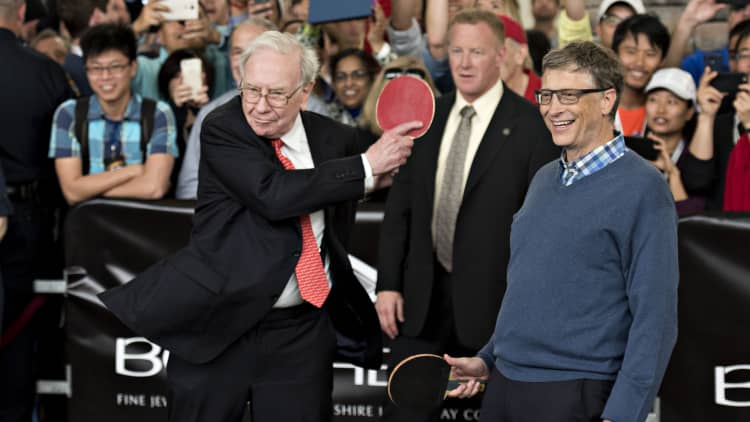I have always been resistant to the "no-spend" hacks promoted by financial bloggers and money micro-communities. As a reporter who covers economic trends, I try to resist the impulse to solely blame the individual for their inability to save money. "Don't buy coffee" is not financial advice that I find particularly compelling.
But earlier this year, I took a hard look at my spending habits and savings ability, and acknowledged there was a lot of room for individual improvement. Though I am investing a healthy amount of money and recently got a new job with a higher salary, my other financial choices were questionable. Was I really okay with spending $8 to $12 four times a week on lunch? And what about those late-night $20 Uber rides home from events I didn't really want to go to in the first place?
I wanted to alleviate some of the financial stress I felt while making more environmentally conscious spending and consuming decisions. And that meant getting very honest with myself.
So for the past four months, I've tracked all of my daily purchases, investment contributions, savings and fixed costs, like rent and utilities, on a Google Sheet. The goal is to review what I buy in real time, in order to cut out anything that isn't adding real value to my life or someone else's.
I also set some "no spend" rules for myself at the beginning of the exercise: no buying clothes or shoes for the foreseeable future, cutting back on eating out, no impulse purchases and no new expensive skincare. I allowed myself books and magazines (I'm a journalist, after all), quality food and makeup and toiletries to replace anything that ran out.
When a week ended, I tallied up what I spent in specific categories: groceries, eating out/alcohol, transportation, travel and miscellaneous. At the end of each month, I got even more granular, breaking down each category into sub-categories, including fitness classes, paper products, movie tickets, beauty products and, yes, coffee (turns out, the occasional latte was the least of my spending problems).
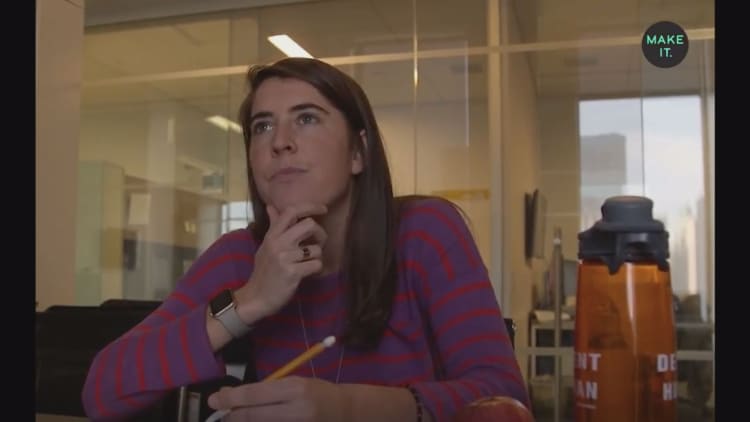
To check my privilege upfront: I'm white, grew up middle class and my parents paid for my college education at a public university in my home state. I recognize that cutting out frivolous spending is not a strategy that everyone can employ, especially those with student debt loads that take up a large portion of their monthly take-home pay.
Tracking my spending, which I intend to keep doing, certainly hasn't solved all of my money problems. But it has made me more aware of where my money is going, and where I can make the easiest and biggest "wins" in my budget. Here are some of the biggest lessons I've learned.
Don't be an 'ostrich'
By far the best habit I've developed as a result of this experiment is being brutally honest with myself about my spending and consumption habits. While I might roll my eyes at the cliched advice to "pack your lunch" in order to save money, my spreadsheet made it clear that eating out was my biggest ongoing discretionary expense. In my most extravagant week, I spent over $200 on drinks and eating out with friends. Where I might have been able to ignore the bills in the past, it is now all detailed in color-coded cells, right there in the Google Sheet.
This clarity is important because humans have a tendency to avoid what they perceive as negative financial information. In behavioral economics, it's called the "ostrich effect," and it means you'd rather bury your head in the sand than face reality, or the dangerously-low number in your bank account. (For the record, it's a myth that ostriches do this to evade danger, but I digress.)
But getting your ducks — or, ostriches — in a row only works if you're honest with yourself about what you actually want to accomplish. And that means facing your bank account, credit card statements and loan balances head on. Manually tallying up all of my restaurant receipts and seeing the sometimes staggering totals has made it easier for me to decline invites or suggest less expensive alternatives. But I was only able to achieve that goal because I've stopped ignoring or rationalizing how much I was really spending.
Take the easy wins
Obviously my shopping urges didn't just go away. And I didn't completely turn my spending off: I bought a pair of shoes, a few new books and allowed myself a guilt-free birthday weekend dining out with friends.
But there are some strategies I've found that can curb the urge to shop generally. For one, I unsubscribed from store emails. If I sign up for a new store's listserv, I use an old email address attached only to my Amazon account, so that all of the "shopping" emails are siphoned off into an inbox I rarely check. I ignore big sales days: Amazon Prime Day, Memorial Day and Labor Day, by reminding myself that I don't actually need anything, and if something catches my eye, I add it to a list in OneNote, an app I use to organize my life. Occasionally I'll go through my "wish" list, and more often than not, the urge to buy the added item has passed. (Except for those shoes, which had been on my to-buy list for over a year.)
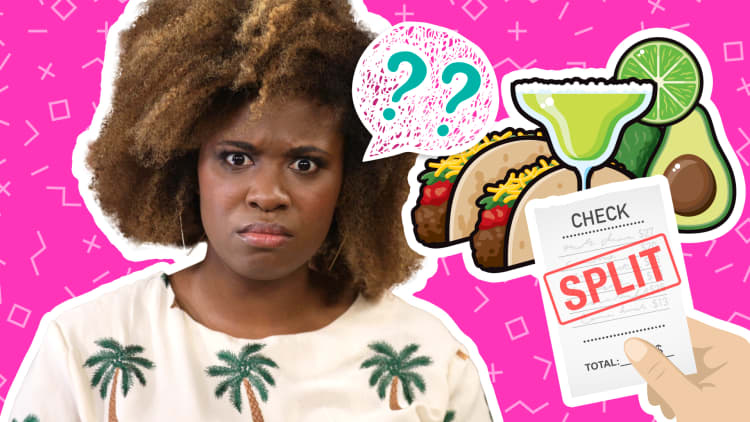
I've also prioritized exercising and reading more after work, so that I am busy and less likely to spend mindlessly. Over the summer, I invited friends over for dinners, made good use of Prospect Park and started declining some events far away from my apartment, when I was likely to take an Uber home.
While I'm still working on my food spending, I did have something of a breakthrough after reading this article from The Atlantic about eating the same thing for lunch every day. Living in New York, I often tell myself that I need to experience all of the things the city has to offer. Who wants a boring brown-bag lunch when you have the most amazing food outside your door? But then I started working in Midtown Manhattan, and I realized that leaving the office and entering the throngs of tourists for a mediocre, $13 chain salad was madness. So I've started playing around with simple, repeatable recipes. The easiest I've found is a rice/beans combination with a vegetable and tortillas. Add a piece of fruit on the side and you have an easy, affordable lunch.
These are basic behavioral changes, but they made a big difference in my budget.
Lean in
One of the big reasons I wanted to partake in this exercise is because I'd like to become a more conscientious consumer, one who spends on things that are valuable to me and limits my environmental footprint as much as possible.
After just a few days of tracking my spending, I realized that I rely on convenience items and services, like Amazon Prime and Uber, far too much. Since I started this experiment, I've cut back on eating out and shopping online, and I've made strides to limit my own food waste.
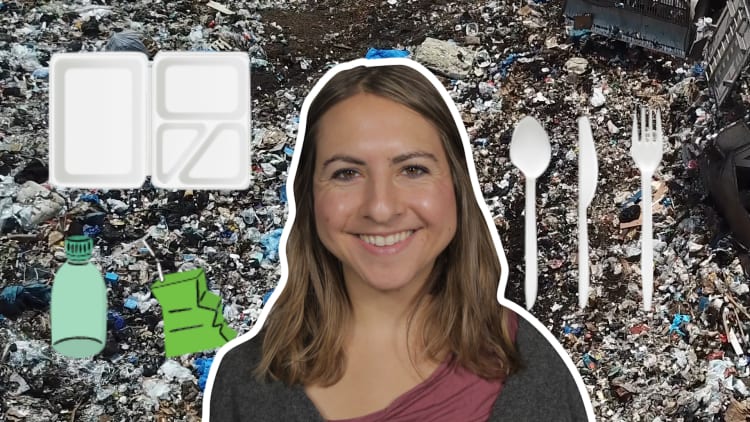
To learn about alternatives to my consumption habits, I turned to the Internet for inspiration. I started following other writers and bloggers who have a similar mindset, including The Year of Less author Cait Flanders, Zero Day Finance and the Zero Waste Chef. I joined freecycling newsletters, which list free items up for grabs in your area, and any "no spend" group I could find on social media (more on that below). I gobbled up articles like this, from author Ann Patchett, which offered advice and insight. I wanted to immerse myself in the movement, or at least educate myself as much as possible.
I'm certainly not making all of my meals from scratch or applying homemade deodorant like the Zero Waste Chef, but I am making progress. I've limited my clothing and beauty purchases and done a better job of buying only food I know I will eat. It's easier to brush off certain spending urges armed with the knowledge of how other people do it. Speaking of which...
Don't go it alone
I write a weekly personal finance newsletter, which is where I first detailed my desire to track and be more conscious with my spending. When I started my no-spend experiment, I decided to launch a separate edition solely for people who are also interested in changing their consumption habits. Dispatches have been irregular, but the subscribers have been engaged, regularly sending me recommendations and cheering me on.
One reader told me that because she wanted to both 1) spend less, and 2) draw more, she started drawing every single purchase she made, which in turn made her more aware of what and how she was consuming. I lack any artistic ability, so this isn't something I would personally do, but it was a reminder that there are countless ways to work toward having more financial awareness. I tend to get obsessive over goals and metrics generally in my life, so tracking my spending on a Google Sheet worked for me. Each day that I filled in the cells was another day I could check "track spending" off of my to-do list. The added pressure of sending semi-regular updates to people was also good incentive to keep it up.
Obviously, not everyone wants to start a newsletter to write about their conscientious spending progress and random finance-related musings. But there are plenty of groups on sites like Reddit, Facebook and Pinterest that can offer support and insight, and countless "zero waste" influencers on Instagram who can inspire you.
Know it's okay to mess up...
If you institute some sort of no-spend rule in your own life, one of the most important things you can do is remind yourself that you don't have to be perfect. If you mess up, that's okay — you can try again tomorrow.
I learned this the hard way when my bag was stolen while I was reading in a park in mid-August. The thieves absconded with my iPhone, credit cards, driver's license, AirPods (which I had saved up for months to buy) and my glasses (which were later recovered by a Good Samaritan, along with my beloved journal). Luckily, in true millennial fashion, I had no cash on me at the time.
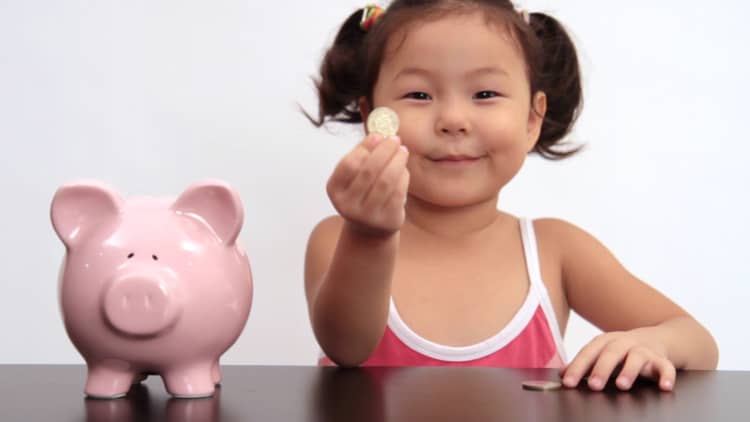
I was, understandably, upset, and after the police left, I reasoned that I deserved to buy dinner and a bottle of wine to make up for a less-than-ideal situation. At work the next day, I reasoned I also deserved to buy lunch. And as the stresses kept building, the more I decided I deserved to treat myself. On top of buying a new phone, which set me back a few hundred dollars, I spent $20 on subway fare while waiting for my new, pre-tax metrocard to arrive; $25 on wine; and around $50 on stress eating.
Look, I didn't go into debt or anything as a result (thankfully, I have an emergency fund for just such a situation). But it was a reminder of how easy it can be to drop the good behaviors we are trying to learn when something goes wrong. A week or so after the theft, I had a talk with myself: Yes, having my stuff stolen sucked. But my response to it, which was profoundly negative, didn't help the situation, and it certainly didn't help me with my other goals. I needed to course correct.
...and that it gets easier
Despite the stolen bag detour, it has gotten easier over the months to rein in my spending. After a few weeks I found myself filling in my Google Sheet almost subconsciously. And I've spent hours tweaking it to make it as effective and easy-to-use as possible.
I used a Google Sheet because I have very specific savings and spending categories I wanted to track, and I enjoy color-coding everything and manually filling in each cell. Plus you can pull it up just about anywhere and update it in real time. That's not everyone's idea of a good time, which I understand. If you don't want to spend hours tweaking, you can use one of the many budgeting apps out there that automatically populate your spending by linking with your bank and credit cards, like Mint or You Need a Budget. There are also apps that let you manually fill in different categories, like DollarBird (an old favorite of mine); or pre-made Excel sheets from a company like Tiller.
The most difficult part is deciding why, exactly, you're interested in such an endeavor. For me, doing what I can in the face of climate change is an important goal, no matter how small it might seem. Foregoing two-day shipping and new makeup is the least I can do. Spending less, generally, is a priority so that I can build up my emergency fund. In four months I've saved around $600 more than I typically would, and invested $400 more in my Roth IRA.
It's not an earth-shattering amount of money, but it's given me some peace of mind. A few months into my experiment, I was able to extend a trip to see an old friend without worrying about the extra cost I incurred; I've contributed more to my Roth than I did the entirety of last year; and, maybe most importantly, I have a real handle on how I'm spending my money. I still have a long way to go, but I'm optimistic about where I'm heading.
Don't miss: The common money regimen that can actually backfire and leave you worse off
Like this story? Subscribe to CNBC Make It on YouTube!
